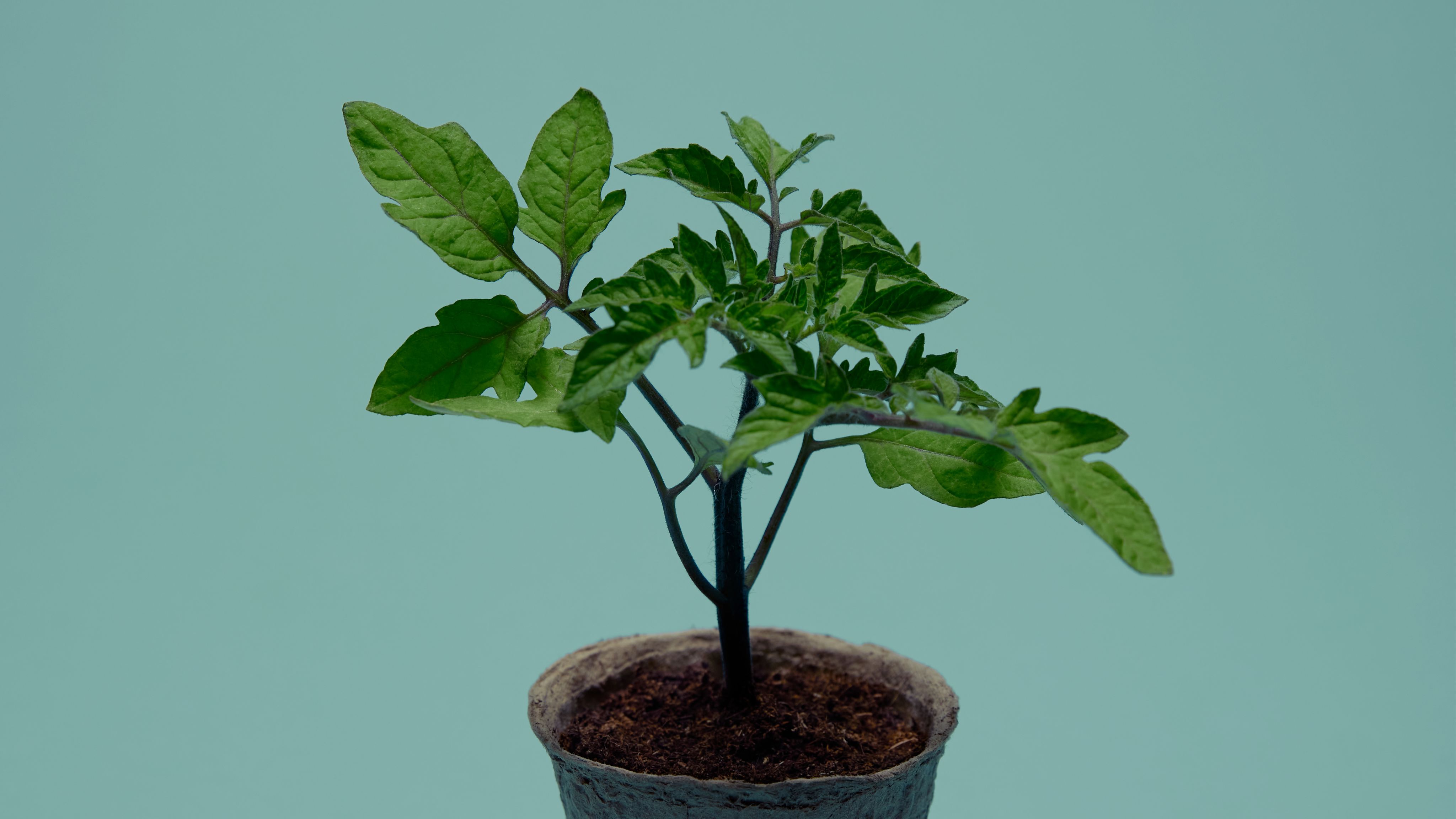How do we feed the world's nine billion population in 2050?
Famine is already a reality, and climate change means the problem is only going to get worse.
Could Imperial have uncovered the solution?

The world’s population is expected to grow by up to two billion in the next 30 years, pushing towards a level four times larger than it was in the mid-20th century. So, how will the world feed itself in 2050?
Famine is already a reality in eastern and central Africa, with more than 35 million people, including 6.7 million children, currently unable to meet their most basic food and nutrition needs, according to the Food and Agriculture Organization, UNICEF and the World Food Programme. And climate change means the problem of food insecurity is only going to get worse, as extreme climate events cause failed harvests and mass livestock deaths.
Where to start? Dr Laura Barter (Chemistry 1995, PhD Biochemistry 1999), a Reader in Plant Chemical Biology in the Chemistry Department at Imperial and Director of Imperial’s Agri-Futures Lab, says a holistic approach is vital. “Connectivity between the whole food system is going to be crucial,” she says. “When we talk about food, we have to think of it from field to fork.”
Barter’s research focuses on developing chemical biology tools to enhance photosynthetic efficiency in food crops. “The overall conversion of sunlight to stored biomass in the leaf is only of the order of one to two per cent efficient,” she explains. “Make this process work better and you can improve crop yield, thereby feeding more people without needing to convert more land to agricultural use.”
To make it happen, Barter’s team, in collaboration with Professor Nick Long and Dr Rudiger Woscholski in the Department of Chemistry, are exploring chemical mimetics of an enzyme that increases concentrations of carbon dioxide at particular locations in the leaf. The results of this research are promising so far, says Barter, but developing the mimetic itself is only half the battle – which is why she is also collaborating with a group at Imperial, led by Professor Oscar Ces, to learn more about how to get the chemical to its target within the plant.
“That’s going to be probably our next biggest challenge,” she says, though a partnership with agrichemical company Syngenta could make the difference. “We’re developing a platform that we can use to start to test the translocation properties of these molecules and help to tailor them, with the help from formulation chemists at Syngenta.”
Collaborations across disciplines, and with stakeholders beyond academia, are key to Barter’s work, not just on this particular research project but in her roles as Director of Imperial’s Agri-Futures Lab and AGRI-net, an agri-science chemical biology network.
“Both of those are aimed at connecting people,” she says. “Very often people don’t realise that their tools and technologies can be translated to tackle challenges within agri-science.” The membrane translocation technology Barter and Ces are using is a case in point – it was originally created to try to understand drug translocation in humans.

Focus on food systems
But food security – all people being able to access enough safe and nutritious food to meet their requirements for a healthy life – is about far more than just food, says Dr Samrat Singh (PhD Environmental Policy 2022), Head of Programmes, Partnership for Child Development at the School of Public Health. “There’s an emphasis now on looking at food systems, public health and ecology altogether,” says Singh, whose work focuses on food systems and the interactions between nutrition, health and agriculture.
Partnering with governments in Asia and sub-Saharan Africa, Singh’s team provides operational research and technical assistance on food system interventions, as well as conducting research in the field and generating evidence. “That evidence then feeds into government policy-making: whether something is working or not working, and if it’s working, how’s it working, as well as all the policy changes that need to be made,” explains Singh.
For the past ten years, Singh has been working with the government of Nigeria on a “home-grown school feeding” programme. “We identify foods that are rich in micronutrients, climate-smart and compatible with local culture,” Singh says, “and then the school menus and the procurement are designed to benefit local agricultural economies.” Evidence gathered over the course of the project has been incorporated into the programme in Nigeria and also into the African Union’s agriculture, public health and nutrition policies.
"We identify foods that are rich in micronutrients, climate-smart and compatible with local culture”
Another route to improved food security is mitigating the impacts of agriculture on climate change. “Agriculture is one of the biggest contributors to greenhouse gas emissions,” says Singh. “How do we reduce the carbon footprint of agriculture through the projects we do?” One of his latest, a collaboration with the London School of Hygiene and Tropical Medicine, involves modelling the total carbon footprint of different diets in order to map the optimum diet in a given location. This research, when complete, will hopefully enable governments to “provide more sustainable and secure food programmes,” says Singh.
So-called “climate-smart” foods – crops that are naturally drought resistant – are becoming increasingly important as the impacts of the climate crisis are felt ever more forcefully in developing nations. With the homogenisation of agriculture globally, traditional crops such as local varieties of millet or ground nuts have been eschewed in favour of maize and rice. Part of Singh’s work involves promoting a return to these old-style crops that are better suited to a warming planet.

"Connectivity is crucial. When we talk about food, we have to think of it from field to fork”

Improving child development
Creating a carbon-neutral, biodiverse food supply chain that benefits local economies and ecologies would be of enormous benefit to food security, but it’s only one piece of the puzzle. Ensuring that communities and individuals have equitable access to that food is another. Dr Elisabetta Aurino (Economics 2013) is a Visiting Researcher in the Imperial College Business School and Assistant Professor of Economics at the University of Barcelona, whose research in Ghana is looking at the outcomes of poor nutrition. In recent years, she has worked with the Ghanaian government on expanding its school meals programme. “We worked to identify districts that were more in need, looking at different food insecurity indicators and the effect of nutrition on learning,” she explains.
After two years, Aurino’s team observed improved height for age in early primary school children and girls, particularly those from more disadvantaged families. “This study was the first to show that in a low-income context, a programme that is run at scale, by a government, works for child development outcomes,” says Aurino. The government of Ghana has since rolled out the school meals programme across 216 districts.
A food security policy that does not consider sanitation and public health measures can only achieve so much.
For feeding programmes like this to be effective, however, there is also the crucial question of how people can transform the food that they access into good nutrition for themselves, says Aurino. “In the low-income countries where I work, children may have enough food, but they may be infested with parasites from the soil or water, and that hampers the absorption of nutrients. So they end up anaemic or they don’t grow as much as they should as a child, and this has long-term repercussions for their health, education and productivity.”
A food security policy that does not consider sanitation and public health measures, therefore, can only achieve so much. When you add in cultural factors such as gender bias – the fact that in some household settings women and girls do not receive their fair share of food – you have a very complex picture.
The good news, says Aurino, is that we know what works to address these challenges, whether through improved infrastructure, education, social protection or a whole range of other tried and tested interventions. “The problem is that there is often a lack of political will to do so.” But by working together across disciplines, academics like herself, Singh and Barter can help make the case to governments for policies with the potential to truly change people’s lives.
Imperial is the magazine for the Imperial community. It delivers expert comment, insight and context from – and on – the College’s engineers, mathematicians, scientists, medics, coders and leaders, as well as stories about student life and alumni experiences.
This story was published originally in Imperial 54/Summer 2023.